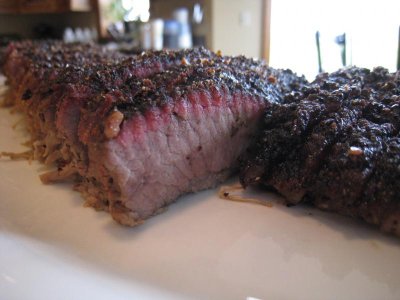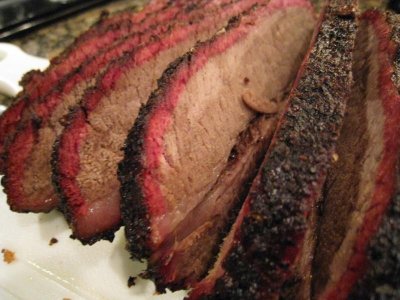If you smoke your brisket at high enough temperature to ensure that the zone around the meat stays at 230 or so, the fat on top begins to crackle and pop and essentially mop that brisket with a FILM of grease that bastes it continuously. When fat is on the bottom, the fat film is still carried upward by natural heat movement, although less efficiently, but you get an added benefit that your flat typically cooks faster (thereby getting done closer to the point’s time) in this position with minimal drying. The closer you try to get to 212 the odds are at some point your brisket will STOP in the process for a moment until the temp gets above 212 again. Target House temp at 270, and smoker temp average of 240s give or take 10 degrees either way and you have NO problem... less drying too.
When you don’t open the pit for ANYTHING you ensure that ZONE keeps its integrity longer. Basically the environment your brisket is in is a moist, ever so slightly pressurized, greasy and lightly smoky and stabilized heated zone. The meat as well, its temperature serves to combat the zone as well. This is why UDS and Eggs put out some pretty good Q. Essentially your smoker is like a huge foil tent when you don’t peek and just let things be…. Not as aggressive as foil, but pretty good.



